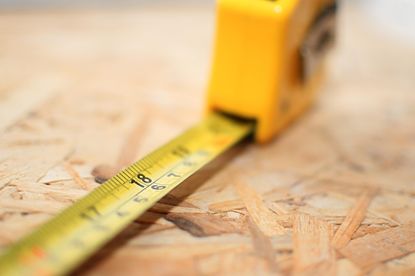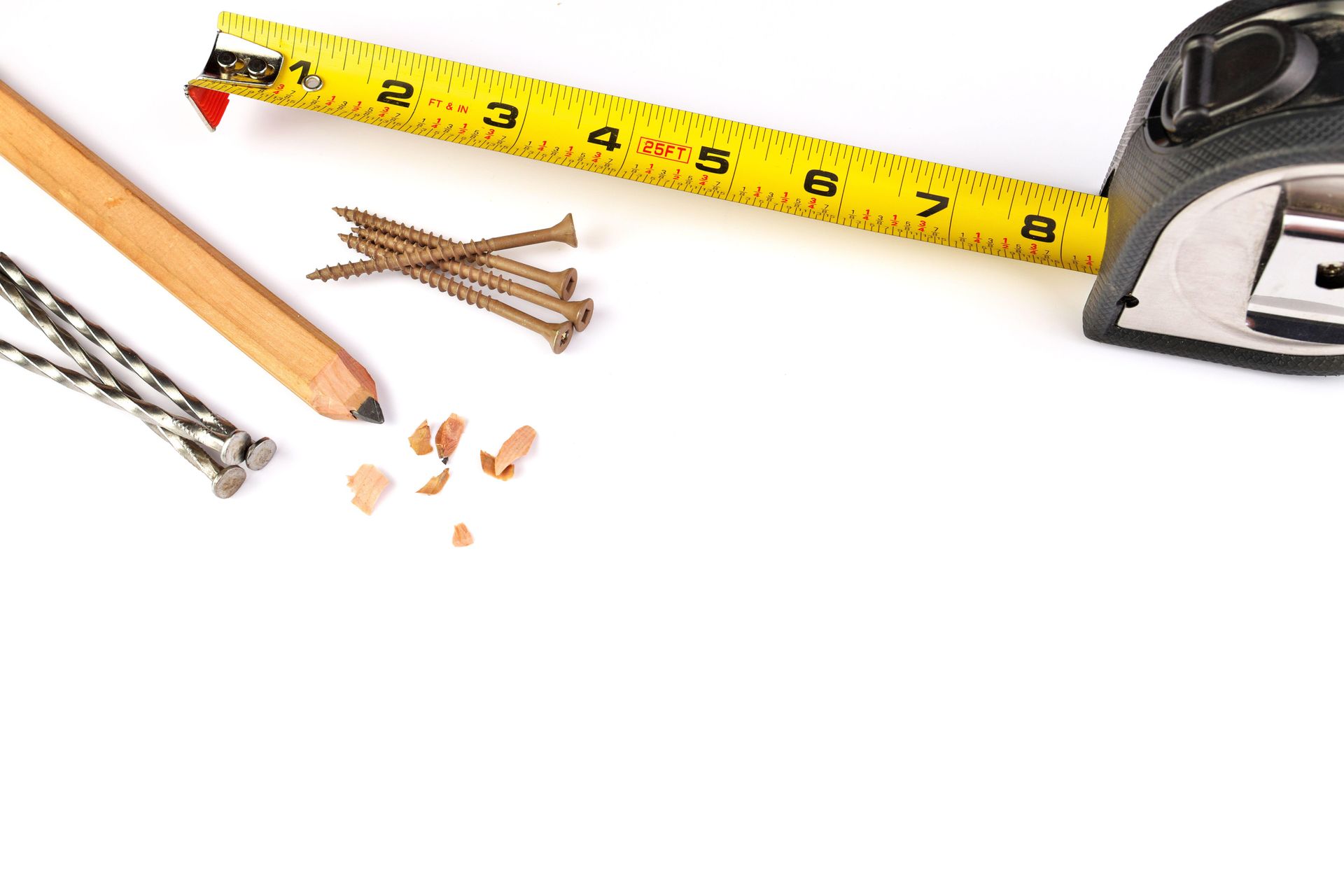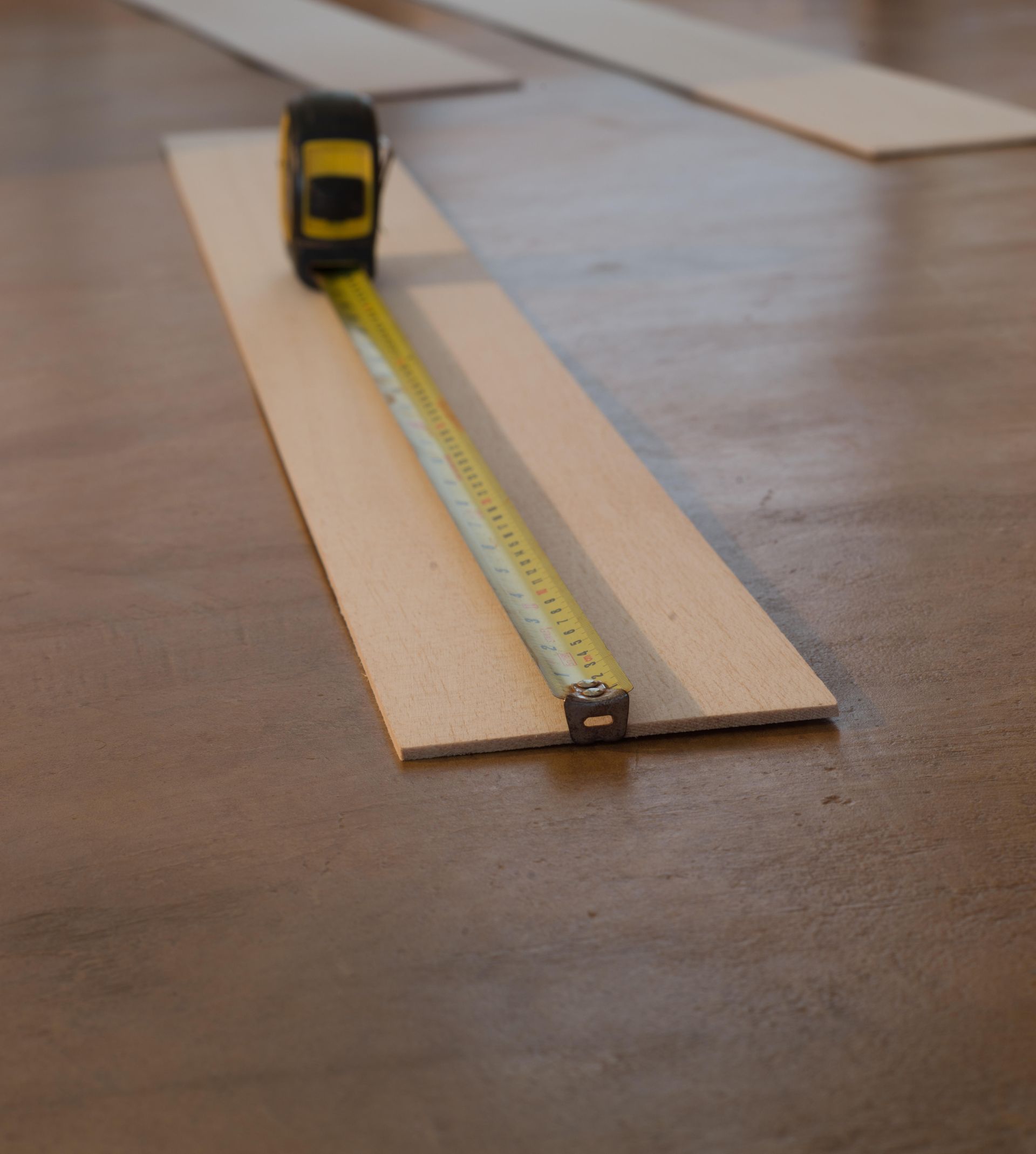What are the black diamonds on a tape measure for? Plus 4 other tape measure DIY hacks we never knew we needed to know
These five tape measuring tips and tricks will make your next DIY project 10 times easier


Tape measures are one of the most useful inventions known to man. Think about it - where would we actually be without them? Some might go as far as saying that we have them to thank for the literal creation of modern society as we know it.
Despite their contributions to our development (and, of course, our home decor ideas) no matter how long you spend with this DIY tool, you've probably never got to grips with all its functions. Yes, we all know the clue is in the name when it comes to its primary function, but did you know that there are multiple hidden hacks hiding within this humble and compact instrument?
If you've ever wondered what those black diamond markings are along the length of your tape measure, look no further. We have the answer to this niggling question (as well as a few more) to make your future home improvement projects easier than ever before.

Lilith is an expert at following news and trends across the world of interior design. She's committed to helping readers make the best choices in their homes through writing practical tips and guides to help with all their DIY needs. For this piece she spoke with a home improvement expert for his top tape measuring hacks.
What are the black diamonds on a tape measure for?

Last time you were measuring a piece of furniture for your DIY weekend project, you may have noticed small black diamonds at regular intervals along the blade's markings. But what are they for?
They actually have a very useful purpose. 'They're called the increment marks and they're there help you make quick and accurate measurements,' says Steven Hill Founder of DIY Gazette. 'The small lines in between each mark are called the hash marks, and they help you make even more precise measurements.'
The most sharp-eyed among you might have realized that these markings, sometimes shown as dots rather than diamonds, appear every 16 inches on one edge of the blade as well as every 19.2 inches on the other edge. Why? Because these marks are actually known as stud or joist marks and are used for spacing engineered floor joists or 'timbers' in construction.
So there you have it - you learn something new everyday. Although this specific use might not have any use to you at all, we're sure you'll find our other tape measure hacks useful.
Tape measuring hacks
1. Use the metal hook to hold the blade in place
Some of us are familiar with the function of the small metal hook at the end of the measuring blade, but if not, we're here to shed some light on things.
When it comes to modern decorating ideas, this clever piece of kit is incredibly handy. 'It's called the blade stop and it's used to hold the blade in place when you're not using the tape measure,' says Steve. 'You can also use it to take measurements from hard-to-reach places, like the top of a high cabinet.'
2. Use the serrated edge of the hook to make markings
Many tape measures also have a serrated edge on the hook of the blade. Most of us don't even notice it's there, and even those that do are probably left wondering what on earth it's for.
Well, the rough metal edge is actually known as a scribing tool. It's intended to be used when you need to make a measurement marking, but don't have a pencil or chalk to hand. The serrated edge will make a small mark if ran back and forth on wood.
According to Steven, it serves a multi-functional purpose too. 'The serrated hook is there to help you get a precise measurement when you're measuring something that's already been cut,' he says. 'To use it, simply hook the serrated end onto the edge of the material you're measuring and then extend the blade until it reaches the other side. The serrated teeth will grip the material and give you a more accurate measurement.'

3. Use the small slot on the hook for grabbing nails
If you thought this one small part of your tape measure couldn't possibly have any more uses, you'd be wrong. The more observant among us may have noticed a small slot on the end hook.
Well, it's there to grab onto the end of a nail or screw when you don't have an edge to hook the blade to. 'This way, if you’re measuring a flat surface and don’t have anyone to hold the other end of the tape, you just need to hammer in a nail or insert a screw and hook the end of the tape onto it to get a clear and accurate measurement,' says Steven.
4. Use true zero for accurate measurements

True zero may sound like some technical mathematical term, but it's really quite simple to understand (despite being extremely clever).
The little metal tip at the end of the blade adjusts itself to promise an accurate measurement every time, whether you're measuring the inside or outside of a surface. As Steven explains: 'True zero means that the blade has been calibrated to start at exactly zero inches so you can get accurate measurements from the very beginning of the blade.'
The first inch of the tape is short by 1/16 of an inch, the precise size of the metal at the end of the blade. If you wiggle the metal tip, you'll see that it moves slightly to leave a tiny gap between the very end of the tape measure which is also 1/16 of an inch.
If you’re measuring the outside of a surface and hook your metal end on the edge, that metal tip will shift out and create a gap so that you aren’t counting it in your measurement, promising you accurate measurements every time.
Be The First To Know
The Livingetc newsletter is your shortcut to the now and the next in home design. Subscribe today to receive a stunning free 200-page book of the best homes from around the world.

Lilith Hudson is the News Editor at Livingetc, and an expert at decoding trends and reporting on them as they happen. Writing news, features, and explainers for our digital platform, she's the go-to person for all the latest micro-trends, interior hacks, and color inspiration you need in your home. Lilith discovered a love for lifestyle journalism during her BA in English and Philosophy at the University of Nottingham where she spent more time writing for her student magazine than she did studying. After graduating, she decided to take things a step further and now holds an MA in Magazine Journalism from City, University of London, with previous experience at the Saturday Times Magazine, Evening Standard, DJ Mag, and The Simple Things Magazine. At weekends you'll find her renovating a tiny one-up, one-down annex next to her Dad's holiday cottage in the Derbyshire dales where she applies all the latest design ideas she's picked up through the week.
-
 What are the Most Comfortable Pillowcases? From Temperature Regulating to the Best for Your Skin
What are the Most Comfortable Pillowcases? From Temperature Regulating to the Best for Your SkinWhen you're looking for comfort in your pillowcases, material matters. These are the best you can buy
By Faaizah Shah Published
-
 5 Simple, but Genius Bathroom Layout Tricks That Will Make Your Space Work so Much Harder
5 Simple, but Genius Bathroom Layout Tricks That Will Make Your Space Work so Much HarderSmall switches to how you lay out your bathroom that help make the most of a small space
By Luke Arthur Wells Published

